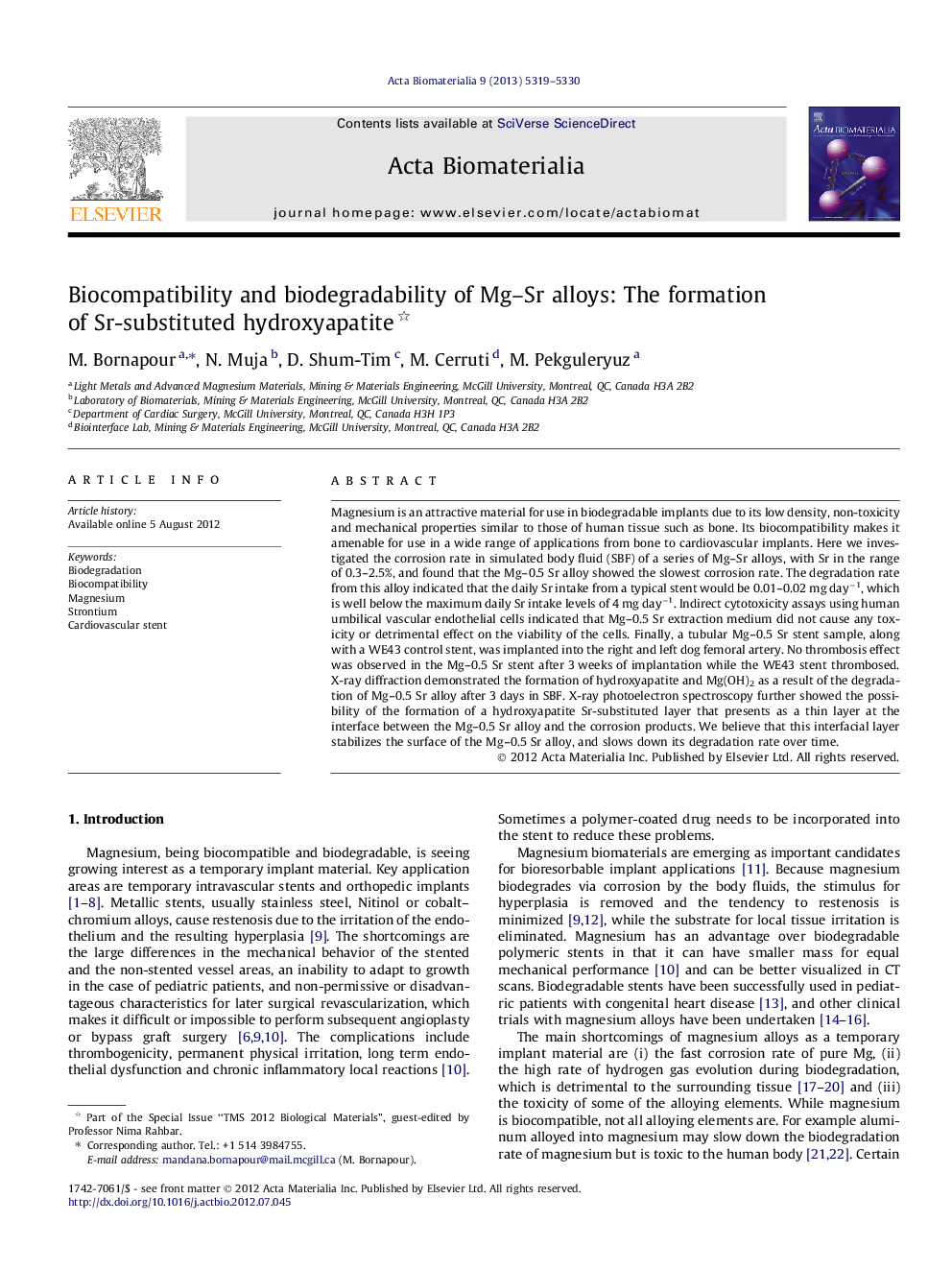| Article ID | Journal | Published Year | Pages | File Type |
|---|---|---|---|---|
| 857 | Acta Biomaterialia | 2013 | 12 Pages |
Magnesium is an attractive material for use in biodegradable implants due to its low density, non-toxicity and mechanical properties similar to those of human tissue such as bone. Its biocompatibility makes it amenable for use in a wide range of applications from bone to cardiovascular implants. Here we investigated the corrosion rate in simulated body fluid (SBF) of a series of Mg–Sr alloys, with Sr in the range of 0.3–2.5%, and found that the Mg–0.5 Sr alloy showed the slowest corrosion rate. The degradation rate from this alloy indicated that the daily Sr intake from a typical stent would be 0.01–0.02 mg day−1, which is well below the maximum daily Sr intake levels of 4 mg day−1. Indirect cytotoxicity assays using human umbilical vascular endothelial cells indicated that Mg–0.5 Sr extraction medium did not cause any toxicity or detrimental effect on the viability of the cells. Finally, a tubular Mg–0.5 Sr stent sample, along with a WE43 control stent, was implanted into the right and left dog femoral artery. No thrombosis effect was observed in the Mg–0.5 Sr stent after 3 weeks of implantation while the WE43 stent thrombosed. X-ray diffraction demonstrated the formation of hydroxyapatite and Mg(OH)2 as a result of the degradation of Mg–0.5 Sr alloy after 3 days in SBF. X-ray photoelectron spectroscopy further showed the possibility of the formation of a hydroxyapatite Sr-substituted layer that presents as a thin layer at the interface between the Mg–0.5 Sr alloy and the corrosion products. We believe that this interfacial layer stabilizes the surface of the Mg–0.5 Sr alloy, and slows down its degradation rate over time.
